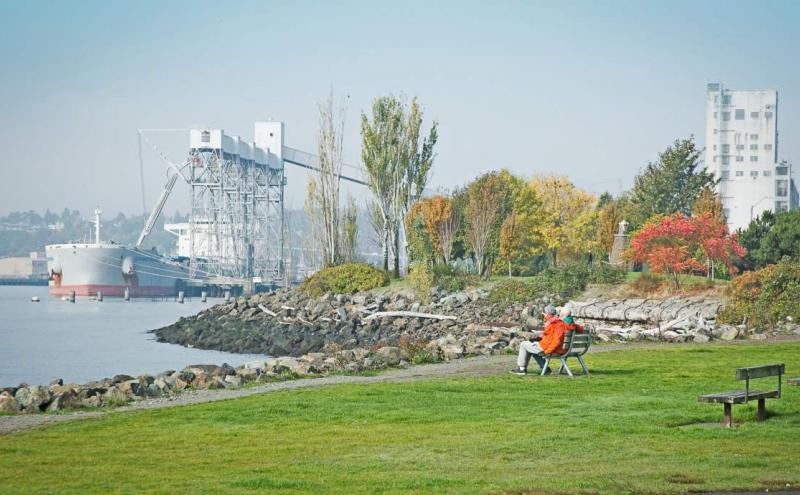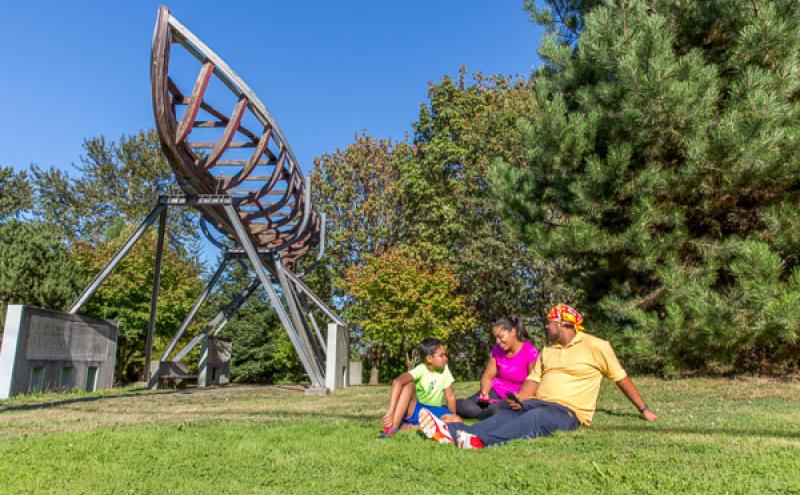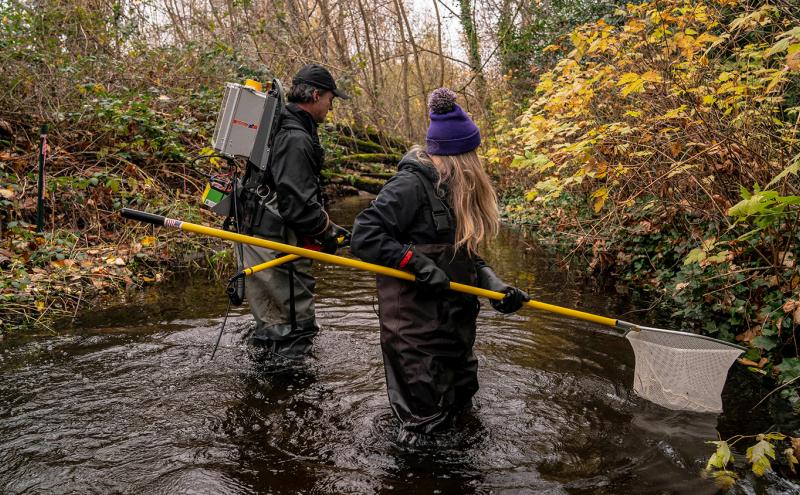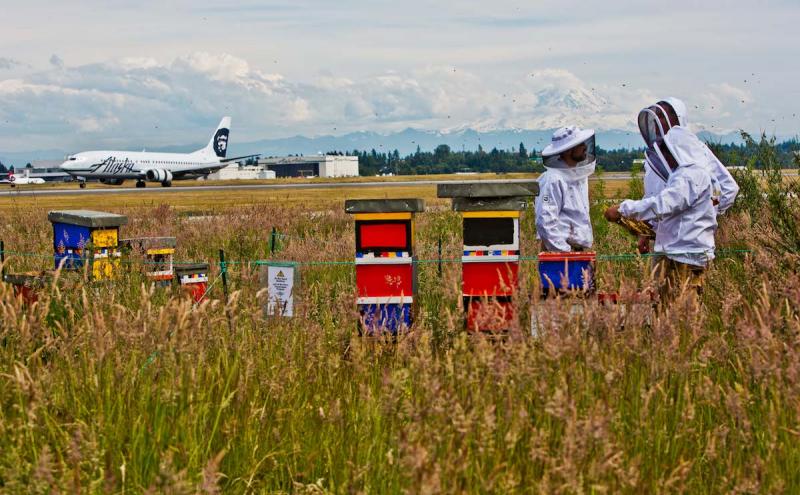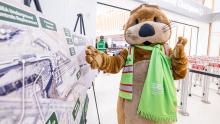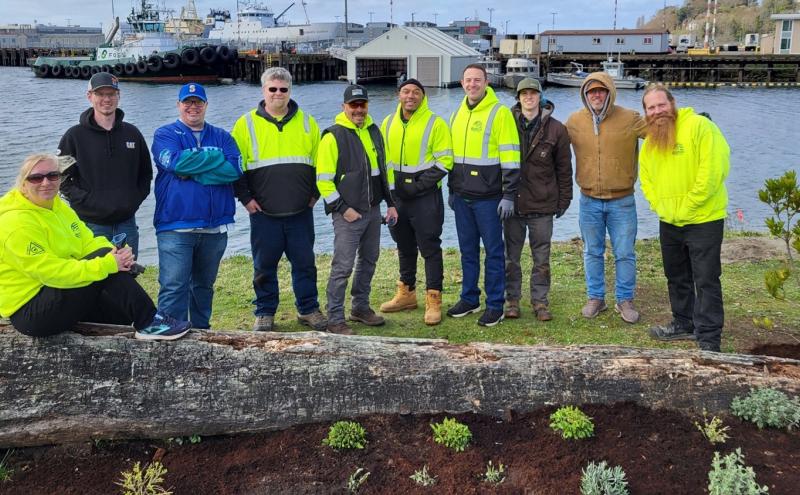
Port of Seattle Terminal 91 tenant Green Latrine shuts down one day each year to bring employees together for a day of service that gives back to the community where they live and work.
Green Latrine owner Will Niccolls wanted to make a difference close to home. He got in touch with Scott Veysey, crew chief in the Port of Seattle Parks and Landscape Department, who helped coordinate a service project in Green Latrine’s own backyard. Niccolls’ employees joined Port landscaping staff at Terminal 91 to plant a 300 square-foot pollinator garden just south of the Magnolia Bridge. Pollinator gardens feature plants that supply nectar and pollen to bees, butterflies, and certain birds and animals.
The buzzworthy project is part of a collaborative effort between the Port of Seattle, the City of Seattle’s Parks and Recreation Department, Expedia, and Seattle Art Museum to create a pollinator corridor along the Seattle waterfront, from the Olympic Sculpture Park through Centennial Park to Expedia’s campus.
Read the Parkways blog post about the partnership
Public and private pesticide-free pollinator corridors feature plants that provide nutrition and habitat for pollinating insects and birds. Even small green spaces like flower boxes and curb strips can be part of a corridor.
The Port’s Parks and Landscape Department planted its first pollinator garden in 2022 in Centennial Park. It’s a 1000-square-foot space next to the Rose Garden midway through the park.
Giving back
Green Latrine and Port teams completed the planting for the Terminal 91 pollinator garden in a day, and Niccolls can see the positive result on his drive into work each morning.
“It’s great to see the planting done,” he said. “It looks like it belongs there. It’s great to see a well-maintained visual entrance to Terminal 91 and the front door to the cruise port.”
In addition to the environmental benefits, Niccolls said the planting was a positive experience for his team. The service project helped build camaraderie among Green Latrine’s 25 employees, many of whom spend much of their time working solo.
“We got to spend a day working together outside of work, not taking client phone calls, and working with each other outside the daily stresses of running the company. It’s great for employees who don’t always see each other to connect with rest of the team.”
A green approach
Veysey and six other team members make up the Port Parks and Landscape Department, which uses a 100 percent organic, nontoxic approach to landscaping at all Port parks, from the Duwamish River to Shilshole Bay Marina.
To develop a pollinator garden, Veysey and his team put together a plant list and locations to replace existing turf. Their plant selection will diversify the habitat and benefit butterflies, bees, and hummingbirds. The team focuses on plants that attract pollinators for the longest season possible.
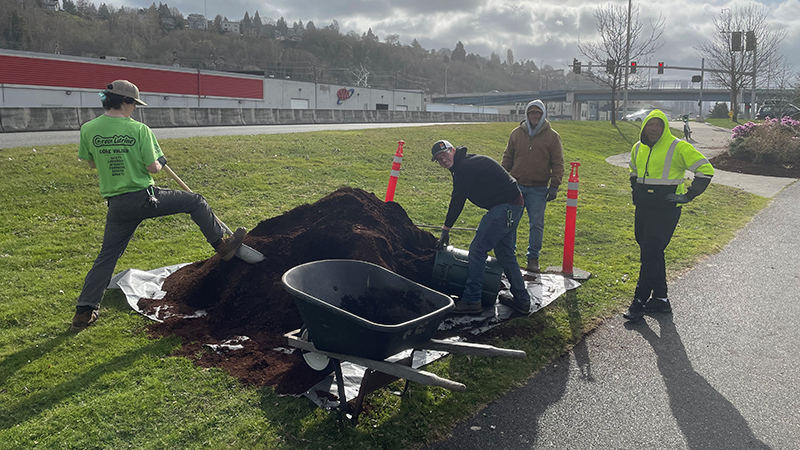
The Port plans to create more gardens in Centennial Park to complete the pollinator corridor; if this project is successful, more gardens will be built on other Port properties.
Fun fact: there's a pollinator garden and beehives at Seattle-Tacoma International Airport!
Un-bee-lievable benefits
By providing pollinators with the habitat they need to thrive, pollinator gardens support agriculture. According to “The Importance of Pollinators” on USDA.gov, animal pollinators are responsible for helping three-fourths of the world’s flowering plants and about 35 percent of the world’s food crops reproduce. That’s one out of every three bites of food you eat!
Pollinator gardens also: 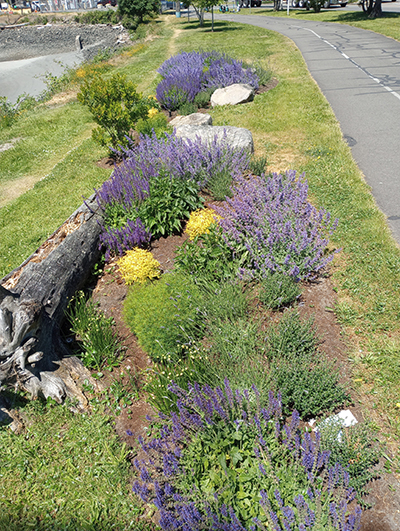
- Reduce grass areas
Lawns typically require more water and maintenance than gardens. Plants also absorb heat and can reduce the heat island effect in urban areas.
- Improve water quality
Plants help slow surface water runoff, preventing water pollution, reducing flooding, and protect our drinking water.
- Increase biodiversity
Gardens attract insects, birds, and butterflies, creating a healthy ecosystem that provides the air we breathe and food we eat.
- Create beautiful spaces
Gardens enliven our neighborhoods with flowering plants that bloom spring through fall.
More about pollinator gardens:

